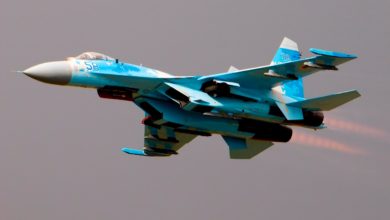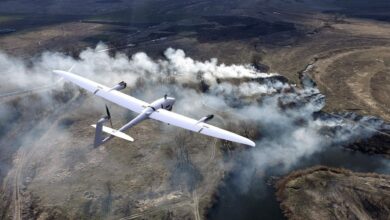NATO allies will boost high readiness forces to “well over 300,000” troops as they strengthen their defenses in response to Russia’s war on Ukraine, alliance chief Jens Stoltenberg said Monday.
Leaders from the US-led military alliance will meet in Madrid this week for what Stoltenberg said would be a “transformative” summit as it grapples with the fallout of Moscow’s invasion of its pro-Western neighbor.
Stoltenberg said allies would bolster some of their battle group formations along NATO’s eastern flank “up to brigade level” — tactical units of around 3,000-5,000 troops — and ratchet up high readiness numbers to “well over 300,000”.
In addition, more heavy weaponry including air defense systems would be shifted forwards and forces pre-assigned to defend specific NATO members on the alliance’s exposed eastern edge.
“This constitutes the biggest overhaul of our collective defense and deterrence since the Cold War,” Stoltenberg said.
NATO currently has a high readiness force of around 40,000 troops under its command, but the more than 300,000 troops are expected to form a larger pool that the alliance could tap into in the case of an emergency.
A NATO official said the new system would be in place next year and improve the alliance’s “ability to respond at very short notice for any contingency” with land, sea, air, and cyber assets.
Stoltenberg also said leaders would agree to bolster NATO’s essential support to embattled Ukraine, whose President Volodymyr Zelensky is set to call in via video link.
US Spearhead
That package would include “substantial deliveries” of gear like secure communications, anti-drone systems and fuel, and help Ukraine over the longer term to pivot to using more advanced NATO-standard arms.
This support is separate from weaponry that NATO members — spearheaded by the United States — are already funneling to Ukraine, including anti-tank rockets, artillery, and air defense to help it hold back Russia’s onslaught.
NATO has been building up its forces in the east of the alliance since Moscow first moved into Ukraine with the annexation of Crimea in 2014.
The alliance has rushed tens of thousands more troops to the region since Moscow launched its full-scale invasion on February 24.
NATO now has eight battle groups across its eastern members and Stoltenberg said some of these — likely in the Baltics and Poland — would be bolstered to “brigade level.”
Jittery leaders in the Baltics have pushed for major and permanent troop deployments that could stop the Kremlin’s forces at NATO’s border.
Germany has said it would take the lead on a new brigade in Lithuania — where it already has forces — but most of those troops would be permanently stationed back on home soil.
Britain’s defense minister has said his country will likely propose a similar set-up for Estonia — where it commands the existing battle group.
Stoltenberg said he expected other allies to announce forces dedicated to protecting specific eastern members at the summit that starts on Tuesday evening.












